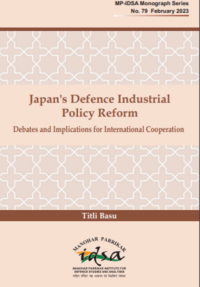The Politics of Reform in China: Deng, Jiang and Hu
This paper seeks to understand the political dynamics that operates behind reforms in China. To interpret the political influences that have, and are, determining the course and trajectory of the reform process, two themes have been chosen. First, an examination of ideological trends (determinants) and their relationship with economic reforms, and the second, as an important corollary, the behaviour of factions (variables) within the Communist Party of China (CPC) that have differing
Dragon in the Savanna: China’s Rising Influence over Angola
China’s relations with Angola have traditionally been friendly due to the fact that both countries were and still are ruled by Marxist Leninist regimes, but until recently the PRC’s presence in the country was rather insignificant. However, in the last five years or so China’s influence in the country has grown rapidly. From a marginal position in Beijing’s foreign policy priorities, Angola has move to the very forefront of China’s foreign relations. Today without question Angola is China’s most important partner on the African continent.
China’s Foreign Policy Challenges and Evolving Strategy
The end of the Cold War, the September 11 terrorists’ attacks, preponderance of US power and globalisation have shaped the present world order and posed new opportunities and challenges for China. China’s need to fulfill its grand strategy of acquiring comprehensive national power within this external environment and overcome the existing challenges has given rise to its post-Cold War foreign policy strategy. Given the challenges it faces, its primary need is to ensure continuance of a peaceful environment to sustain its reform and modernisation programme.
Domestic Politics in Taiwan and Its Impact on Cross-Strait Relations
Electoral politics in Taiwan reflects the popular ambivalence in articulation of its political and national identity. This ambivalence is testing the strength of nascent domestic democratic institutions. Taiwanese democratisation has also introduced a new variable in crossstrait relations that China and the US both have to contend with. Greater democratisation of Taiwanese politics and the struggle over the country’s national and cultural identity is making the management of crossstrait relations more complex for all three parties, i.e., Taipei, Beijing and Washington.
Securing the Sea Frontier: China’s Pursuit of Sovereignty Claims in the South China Sea
China’s maritime territorial claims, and its diplomatic and military measures to attain them, have caused much regional concern in recent years. The expansive maritime sovereignty claims of China in the South China Sea flow from three key goals: the completion of its incomplete nationalist project of territorial consolidation and unifying the state; the desire to control the contested maritime periphery; and the garnering of sea-based resources such as oil and gas that have assumed critical importance for fuelling the economy of a rapidly modernising China.
Railway to Lhasa: An Assessment
On October 12, 2005, China announced the completion of a railway line to Tibet—one of the world’s highest train routes. This railway line climbs 5,072m (16,640ft) above sea level and runs across Tibet’s snowcovered plateau—dubbed the roof of the world. China’s official Xinhua news agency while celebrating the achievement said that the equivalent of USD 3 billion had been spent on the challenging 1,118km (710-mile) section, after four years of construction.
The Political Economy of China’s Defence Modernisation
World over, differences exist about the impact of military expenditure. While development economists consider excessive military expenditure as wastage, many defence economists have a different view. With the defence versus1 development debate unending, China makes a unique contribution. While China’s defence expenditure is not well known, the hinese experience shows that investments in development do provide an expanded economic base subsequently, which will take care of defence needs.
India and the East Asian Summit
The inaugural East Asian Summit (EAS), touted as groundbreaking, commenced on December 14 in Kuala Lumpur comprising 16 nations— the 10 ASEAN countries, China, Japan, India, Australia and New Zealand with Russian President Vladimir Putin making a special appearance. The EAS Declaration, like many issued before in the region, is wide-ranging: from political and security cooperation, infrastructure development, financial issues, further liberalisation of regional trade and investment, poverty eradication to fighting epidemics. Nonetheless, inter alia, three points need underscoring.
Foreign Economic Policy-Making in China
Understanding the inner dynamics influencing the ongoing process of economic reform in China, especially the flexibility achieved by government bureaux is important for strategic policy makers in India. The brief study seeks to determine the relationships of dominance, correspondence, and contradictions as well as the direction of influence, the sequencing between government bureaux, and the end results of their joint operations by applying the micro-macro linkage approach.
Elections in Japan: Koizumi’s Gamble Pays Off
Japan’s ruling Liberal Democratic Party (LDP) – which has dominated Japanese politics for the past fifty years, swept the recent snap polls called by Prime Minister Junichiro Koizumi in August this year. The outcome of the elections has significant implications for Japan’s domestic as well as foreign policy. The extraordinary mandate that Koizumi received established him as the undisputed leader, giving him the green signal to move ahead with his proposed reforms. The LDP garnered as many as 296 out of the 480 seats in the Japanese Diet’s Lower House.













